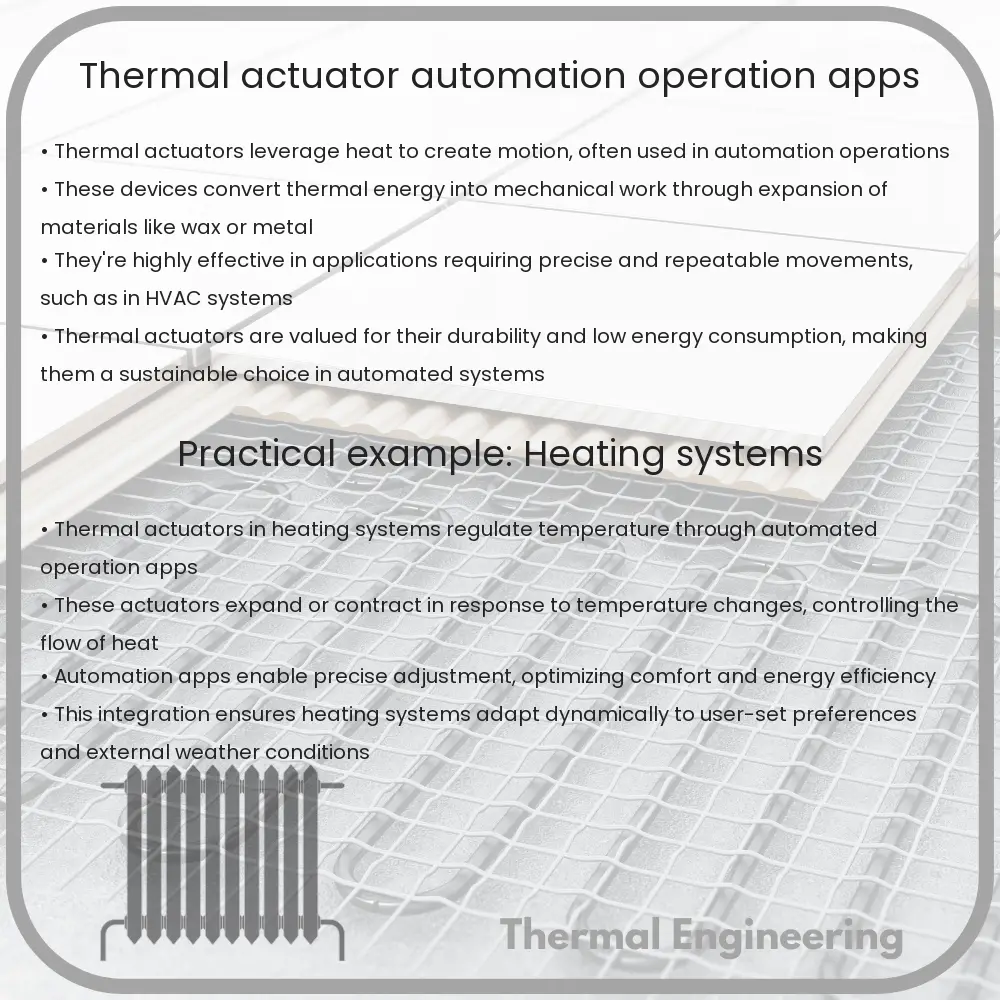Learn about thermal actuators, their functions in automation, operating principles, types, applications, and future potential.

Understanding Thermal Actuators in Automation Applications
Thermal actuators are devices that utilize thermal energy to produce mechanical motion. In automation, these actuators play a crucial role by converting temperature changes into controlled motion. This article explores the fundamental principles of thermal actuators, their types, and commonly seen applications in automated systems.
Operating Principle of Thermal Actuators
The operating principle of thermal actuators relies on the thermal expansion properties of materials. When materials are heated or cooled, they expand or contract. This dimensional change can be harnessed to perform work. A simple example can be seen in a bi-metallic strip in a thermostat, which bends when heated to break or make an electrical contact.
Types of Thermal Actuators
- Shape Memory Alloys (SMAs): SMAs are metals that remember their original shape. When deformed at lower temperatures, they revert to their pre-deformed shape upon heating.
- Wax Actuators: These actuators use a specially formulated wax that expands significantly when heated, typically used in thermostat valves in radiators.
- Bi-metallic Strips: Comprised of two metals with different thermal expansion rates bonded together. Upon heating, differences in expansion cause the strip to bend, triggering movement.
How Thermal Actuators are Used in Automation
In automation, thermal actuators are commonly applied for precision control in environments sensitive to temperature variations. Their main advantages include simplicity, reliability, and the ability to operate without an external power supply, relying solely on environmental temperature changes.
- Temperature Control: In HVAC systems, thermal actuators manage the flow of heat through pipes by opening or closing valves based on the detected temperature.
- Fire Safety: In fire suppression systems, thermal actuators can automatically open vents or activate sprinklers at certain temperature thresholds.
- Fluid Handling: In the petrochemical industry, thermal actuators control the flow of various fluids through the pipelines, optimizing the process based on thermal conditions.
Advantages and Limitations
Thermal actuators are favored for their dependability and low maintenance requirements. They are inherently energy-efficient as they harvest energy from temperature changes in the environment. However, their response speed and force are generally limited and may not be suitable for all types of industrial applications.
Future Outlook
As automation technology continues to evolve, thermal actuators are expected to find new roles in more sophisticated applications. The ongoing research on materials with superior thermal properties and smarter integration techniques promises to expand the capabilities and efficiency of these remarkable devices.
By understanding and harnessing the benefits of thermal actuators, engineers can continue to innovate and improve automation solutions, enhancing both performance and sustainability in industries worldwide.